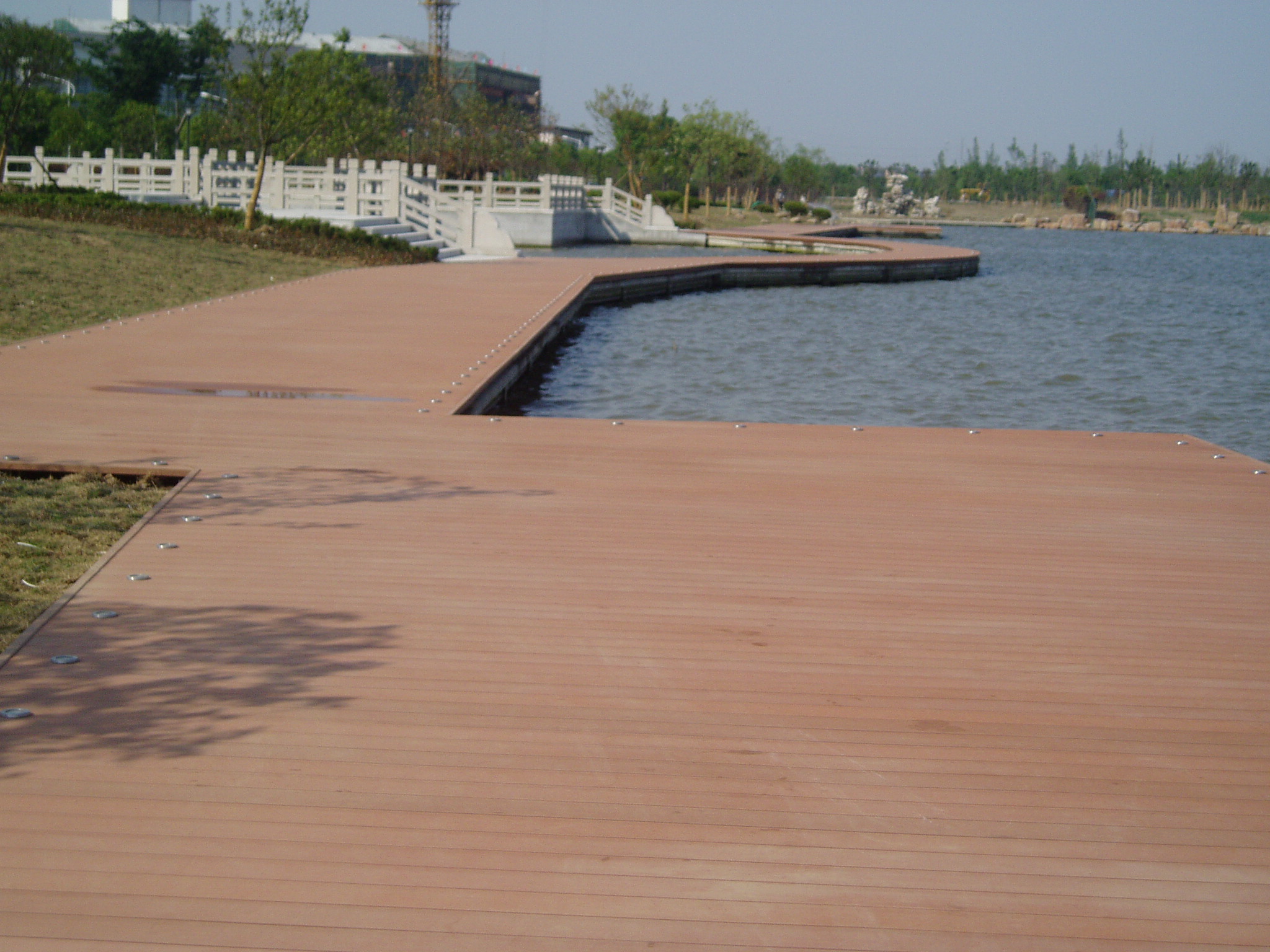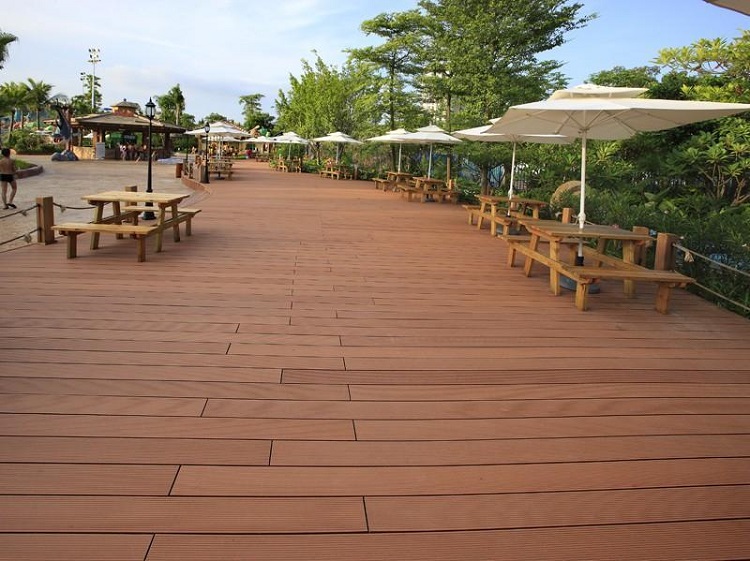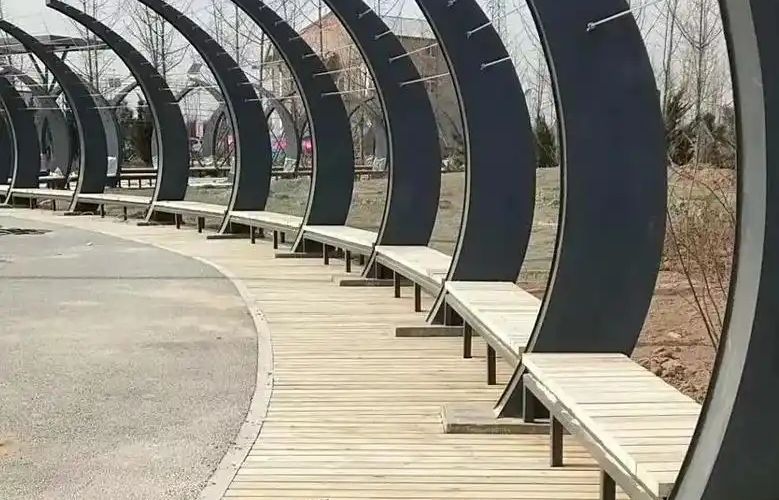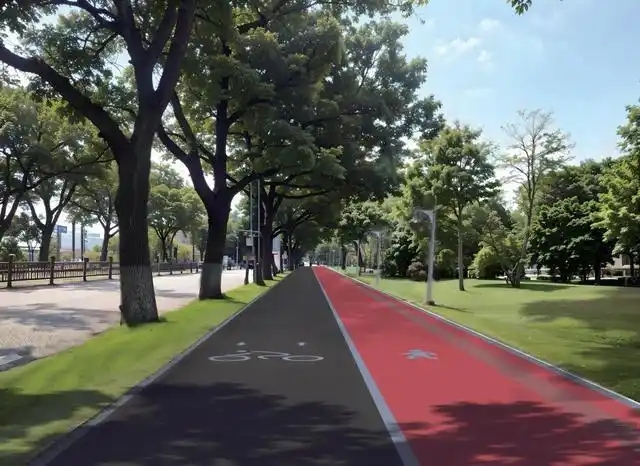When selecting materials for park walkways, they must balance slip resistance, durability, aesthetics, and environmental friendliness. Common paving materials include WPC flooring, anti-corrosion wood, stone, permeable concrete, asphalt, etc. Below is a comparative analysis of several mainstream materials:
1. WPC Flooring (Recommended)
Advantages:
Slip & Wear Resistant: Wood-textured surface with high friction coefficient, reducing slippage even in rain.
Exceptional Weather Resistance: UV-resistant, moisture-proof, and rot-proof, resisting cracking/deformation for long-term outdoor use.
Low Maintenance: No painting or anti-corrosion treatment needed; easy to clean, with a service life of 10+ years.
Eco-Friendly & Aesthetic: Strong wood texture, diverse colors, and customizable patterns to enhance park landscape appeal.
Easy Installation: Lay the keel with snap-fit installation allows for quick construction and can be paired with lighting systems.
Disadvantages:
Suitable Scenarios: Main park pathways, waterfront boardwalks, viewing platforms, etc.


2. Anti-Corrosion Wood
Advantages:
Disadvantages:
Requires regular anti-corrosion painting; prone to rotting and cracking without maintenance (high upkeep costs).
Slippery when wet, prone to fading and deformation over time.
Suitable Scenarios: Temporary walkways, secondary landscape paths.

3. Stone (Granite, Bluestone, etc.)
Advantages:
Extremely durable with a lifespan of decades.
High-end appearance, suitable for classical or modern park styles.
Disadvantages:
Poor slip resistance: Polished surfaces are slippery and require anti-slip treatments (e.g., bush-hammered or flamed finishes).
High cost: Expensive material and installation costs, plus low permeability leading to water accumulation.
Cold and hard texture: Uncomfortable in winter, unsuitable for barefoot areas or children’s zones.
Suitable Scenarios: Plazas, entrance steps, or areas requiring a solemn aesthetic.

4. Permeable Concrete
Advantages:
Excellent water permeability reduces 积水 (water pooling), ideal for sponge city projects.
Moderate cost, fast construction, and adjustable colors.
Disadvantages:
Prone to wear and sanding over time, with moderate slip resistance.
Rough surface texture, less comfortable than WPC flooring.
Suitable Scenarios: Secondary roads, bike lanes, etc.

5. Asphalt
Advantages:
Low cost and fast construction, suitable for large-area paving.
Good wear resistance and simple maintenance.
Disadvantages:
Softens in high summer temperatures and cracks in winter.
Impermeable, poor landscape appeal, and lacks natural texture.
Suitable Scenarios: Peripheral vehicle roads or temporary paths in parks.

Comprehensive Recommendation: WPC Flooring
Reasons:
Balanced Performance: Optimal in slip resistance, durability, aesthetics, and sustainability.
Long-Term Economy: Eliminates maintenance costs and offers a long service life.
Design Flexibility: Pairs well with lighting, railings, and other elements to enhance overall park quality.
Suggested Combination:
Use WPC flooring for main pathways and permeable concrete for secondary roads to balance functionality and cost.
For detailed solutions (colors, installation techniques, etc.), call +86-13357168058!






 扫一扫,关注我们最新消息
扫一扫,关注我们最新消息 